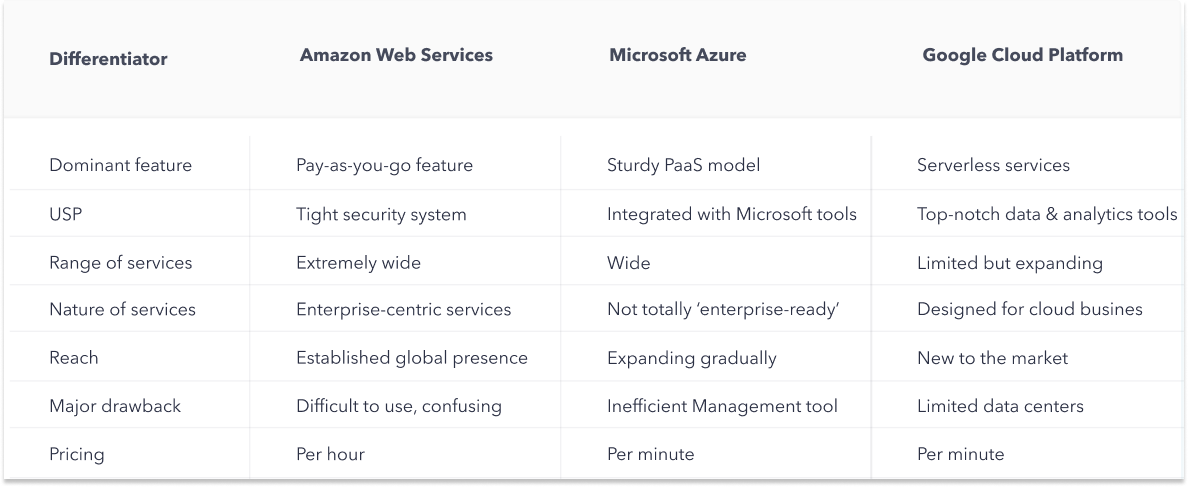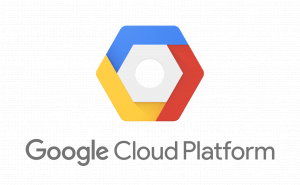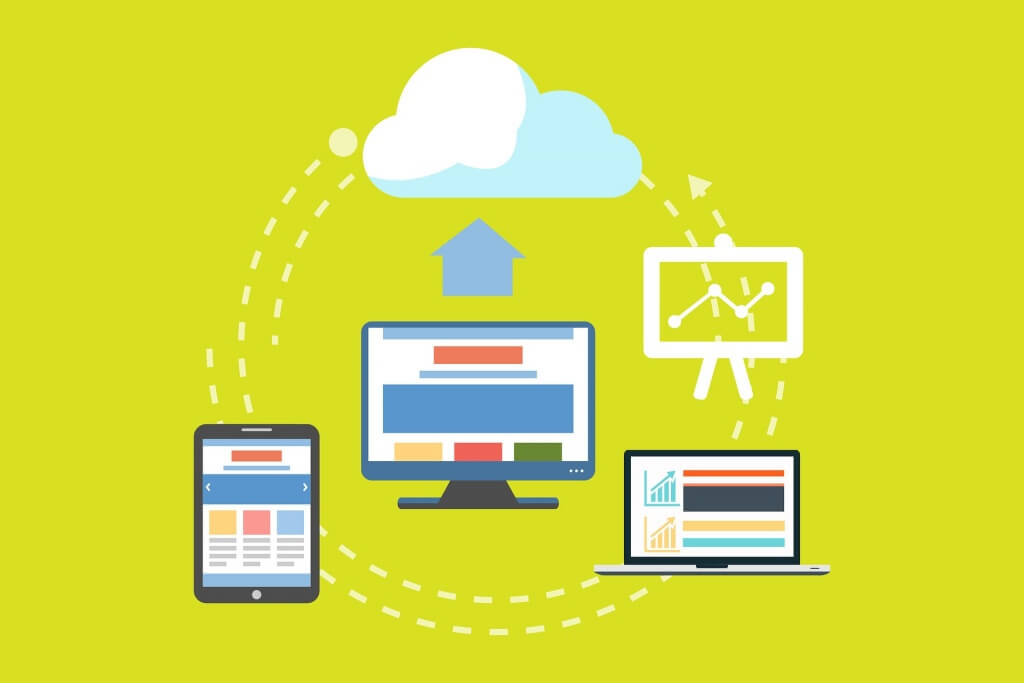A recent Gartner report suggests that more than 50% of enterprise IT spending would shift to the cloud by 2025, overtaking traditional IT spending. In fact, the worldwide user spending on public cloud spending would be almost 600 billion dollars by the end of 2023 itself.
And while SaaS products would still garner the highest user spending of around 208 billion dollars, it would be IaaS, PaaS, and DaaS witnessing the highest spending growth in the year.
As per the study, the enterprise adoption of the cloud would accelerate the cloud shift. It would open new avenues for cloud adoption that were primarily non-cloud markets. Even distributed cloud would be a key catalyst in accelerating cloud adoption and disrupting the current IT market.
The emergence of cloud computing services has resolved most storage and computing issues that businesses faced and simplified business operations. Their ever-growing popularity could be attributed to 3 major factors - convenience, scalability, and reduction of management issues.
Of the many cloud service providers (CSP) operating today, three stand out from the crowd - Amazon AWS Cloud, Microsoft Azure, and Google Cloud.
These three dominant CSPs offer an array of services, products, and features that simplify all your online operations. However, many (prospective) users often get caught in this google cloud vs AWS vs azure battle. Even for organization all-in on the cloud, the new rollouts, new data centers, and new compute instance types can render them confused or even overwhelm them.
Through an analysis of the key differentiators between these CSPs, we have attempted to bring out the pros and cons of using each of these cloud platforms, with the purpose of enabling you to pick the one that is optimum for your requirements.
Shifting to Cloud Computing In 2022: Why Do It at All?
Before talking about AWS, Azure, or Google Cloud, there is a bigger question looming on our heads- Why shift to the cloud?
We've read enough studies that cloud shift is indispensable. Almost every business is either shifting completely to the cloud or announcing a part of its cloud-hosted product. Data sovereignty, low latency, and network bandwidth are enabling more businesses to shift towards distributed cloud today.
Well, here are a few reasons and benefits of cloud computing:
-
Increased Flexibility and Convenience: Create a document and upload it to a cloud platform. Anyone with unrestricted access can change it accordingly; can track the changes as well. There is a unique copy of the document that is reflected uniformly across all users.
-
Incorporate Demand For Integration: Today's businesses want to offer more features within their product. This requires greater integration capabilities. Cloud platforms allow them to incorporate these integration demands within the product with extended storage, cloud integrations, and more.
-
Reduced Management Issues: Cloud computation solutions are usually billed on the go. As a result, budgetary and management issues can be minimized using the cloud.
-
Scalability: It is extremely simple to scale up the magnitude of any operation when on a cloud platform. Through cloud application development, new resources are instantly available at a very cheap rate and the more people use it, the cheaper the services get.
-
Reduced Data Loss Risks: While on-premise servers allow businesses to have backup and recovery options at their disposal, permanent loss of data in case of any phishing or ransomware attack is undeniable.
-
Facilitating Remote Work: Most companies are adopting the remote work model, especially owing to the lockdowns. With the cloud, anyone can access the products anywhere while working. Aall they need is a stable internet connection.
The Big 3 Unraveled: AWS vs Microsoft Azure vs Google Cloud
Amazon AWS
Amazon Web Services has been a top-notch provider of cloud application development platforms that are tiered in terms of usage. Amazon is renowned for providing a comprehensive range of cloud application development platforms. Their platforms range from Core computation to IoT and even Game Development. Being in the competition since 2006, AWS is one of the most matured cloud platforms today. It comes with over 200 fully functional services for businesses of all scales.
The Pros
When it comes to Amazon Web Services, there are several advantages that you can enjoy using this as your cloud service provider. Amazon was one of the pioneers in the cloud services market. Here are some of the pros that you get with Amazon AWS:
-
Services are enterprise-friendly and highly scalable and flexible. If you require high-end computational services, you would struggle to find a better option.
-
The pay-as-you-go feature enables you to avail of and pay for only the features that you require.
-
AWS has put very tight security measures in place which makes it one of the most trusted CSPs. The multiple layers of security encryptions employed by AWS mean that your data is totally safe.
-
Auto-scaling allows developers to focus on tasks such as programming and development and leave lesser management issues to autopilot.
-
The variety that AWS offers is unmatchable. There is a cloud application development platform available for each and every purpose.
-
AWS web services offer solutions across at least 6 modes of payment and dozens of templates in each and every programming language.
The Cons
While AWS is one of the oldest and largest cloud platforms today, it still does come with some cons that make it a bit complex. Here are some of the cons of Amazon AWS.
-
AWS is based on a hybrid cloud structure. The use of a third-party public cloud could sometimes create unexpected issues.
-
AWS requires its users to have at least some basic knowledge of the cloud; which is not ideal for total novices.
Microsoft Azure
Microsoft requires no introduction to anyone on the planet as a behemoth in the tech space. It should be of very little surprise to anyone that Microsoft offers its own cloud computing solutions and is even ranked as the second-largest cloud management platform. Microsoft Azure is popular because of a spotless track record and its affordable pricing. Flexible billing and a plethora of certifications are its major draws.
The Pros
Being the second largest cloud solutions provider, Microsoft Azure is certainly loved by businesses across the globe. And that is mostly because of the many features and advantages that it offers. Here are some of the pros that you can enjoy with Azure:
-
Microsoft cloud application development is one of the easiest and most effortless in the business. A host of testing tools which help you test everything and anything are Azure’s USP and Microsoft Cloud development becomes a breeze with them.
-
Azure operates solely in a private cloud computing environment. As a result, its PaaS model is sturdy and dependable.
-
Azure, being a Microsoft product, gels well with other Microsoft products such as Windows server, Active Directory, etc.
-
With the Auto-scaling options that Azure offers, working in a cloud environment is as easy as it gets.
The Cons
Like AWS, Microsoft Azure also has some common limitations that hinder its expansion and stop it from becoming the leading cloud solutions provider. Here are some of the common cons that businesses have witnessed with Microsoft Azure.
-
Power outages are the nemesis for Azure. As Azure lacks in data backup and restoration facilities, power outages are a nightmare for the users because the data becomes inaccessible during that time. Nevertheless, tools like Serverless360 helps to proactively monitoring the outages and auto-rectify the issues.
-
Microsoft Azure SaaS is not as strong and user-friendly as SaaS of other CSPs; especially when you compare Amazon Web Services vs Azure.
-
Azure’s capabilities in general and Azure web application development in particular, are limited beyond the Windows and Microsoft environment. Problems in Microsoft Azure development are widely reported by developers. This is one grey area which may tilt the scales in the battle of Microsoft Azure vs AWS in favor of the latter.
Google Cloud Platform
One of the latest entrants in Cloud Computing Services, Google has managed to turn heads with its array of unique features and high-quality services. Being a subset of Google Cloud, Google Cloud Platform has gained a lot of popularity in just a short time. Launched in 2010, today GCP has a number of services and offerings for services like networking, big data, computing, and more.
The Pros
Being a subsidiary of the behemoth Google and including the widely used Google Workspace, GCP has certainly been able to deliver a number of benefits to businesses. Some of the pros of using Google Cloud Platform are:
-
Google charges exactly on usage and it bills on a per minute basis, unlike other CSPs who bill at an hourly rate.
-
No one else integrates and uses data from different platforms with the ease and effectiveness of Google Cloud Platform. Its data & analytics tools are of the highest standard.
-
Developers could create custom machine types quite conveniently. The processing capabilities and scalability of Google cloud are mind-boggling.
-
Google Cloud provides completely serverless services. The server’s resources are maintained by the cloud platform. With the arrival of Google Cloud dedicated server is no longer a ‘must have’ for businesses and marketers.
-
To counter any technological disruptions in the future, Google is creating a ‘future-proof infrastructure’.
The Cons
Despite offering countless benefits, GCP has still not been able to overtake the two leaders in the list. This is because of some of the cons that one can find with the platform. Some of these are:
-
As Google is still a relatively new player in this field, the variety of Google Cloud computing services is minimal. Because of the relative lack of infrastructure as compared to Azure and AWS, Google Cloud app development is a slightly arduous process.
-
Server coverage is limited in many parts of Asia, Africa, and Europe.
-
The Cloud’s web interface is confusing at times.
The Showdown

The Final Verdict
While Azure is quickly closing the gap between itself and AWS, it is still quite a way off from AWS in terms of market penetration and global presence. For the moment, AWS is the undisputed king of the market but it is under immense pressure from Azure to retain its throne.
Google Cloud, still very young, is not an immediate threat to the other 2 but things could change in the long run considering that though Google Cloud currently offers limited services, the quality of their products and services is outstanding. As of now, Google has set its sights on advanced use cases that are centered on Machine Learning and Big Data.
On the other hand, the Microsoft Azure vs Amazon Web Services battle is set to intensify with Azure posting massive revenues each passing quarter. The first mover advantage has helped AWS surge ahead of its rivals. Its enterprise-friendly features and a never-ending range of services, coupled with its ever-growing infrastructure have put it in a position where it could trigger aggressive price cuts to throw its rivals off their track. Azure, on the other hand, is pumping in money to build the Azure Cloud Platform and plans to strengthen its on-premise software. It has gradually eaten into Amazon’s market share over the past few years and is leaving no stone unturned to continue the trend.
Cloud Computing Trends That We May Witness in 2019
Hybrid cloud solutions will gain popularity: Hybrid cloud reduces the risk and expense of migrating to the cloud. More companies would opt for it in 2019 to enjoy the effectiveness of cloud solutions.
Google Cloud will get stronger: Serverless is the fastest growing extended cloud service; which would put Google Cloud in a position of strength.
The number of cloud services will rise: Bain & Company have tipped SaaS to grow at an 18% CAGR by 2020, while KPMG predicts that investments in PaaS will rise to 56% in 2019. As more organizations attempt to seek the benefits of a cloud, the number of cloud-based services and solutions will continue to rise in 2019.
Factors You Should Consider Before Migrating To The Cloud
Before you jump on the bandwagon and shift on to the cloud, here are a few things you might want to review before you take the plunge.
Your objective for moving to the cloud: You must ascertain your goal for moving towards the cloud. Without a set goal in place, you will fail to judge the impact of the cloud on your operations.
The ideal deployment model: Each major CSP offers SaaS, PaaS, and IaaS. Each model varies in the degree of control it offers. Match the level of control each model offers against the level of control you wish to have.
Which applications should be migrated?: Not every application is suitable for the cloud. Some of them need to be kept on-premises.
Security: Security is non-negotiable and cloud security is very important for businesses. Understand how each CSP secures your data and examine their security certifications.
Time & cost efficiency: Moving data requires a lot of man-hours and bandwidth. Migrating to the cloud may prove costly and time-consuming and it is imperative that you analyze the time and cost efficiency of your preferred cloud platform before you migrate to it.
Head-to-Head Comparison: Number Crunching!
-
AWS experienced a 27 percent year-over-year revenue growth to $20.5 billion in the third quarter of 2022.
-
AWS has emerged as a key revenue driver for Amazon. Almost 74% of Amazon's operating profits are derived from AWS itself.
-
Google Cloud, with a current market share of 9%, has been trying hard to close in the race to become the top public cloud. However, AWS still reigns with a 33% share, followed by Microsoft Azure with a market share of 18%.
-
AWS is the number one public cloud infrastructure platform and it controls 41.5% of total application workloads in the public cloud. Azure trails it at second with 29.4% while Google owns a measly 3%.
-
Canalys estimates the market share of AWS, Azure, and Google Cloud at approximately 32%, 16%, and 7% respectively.
Summing Up
According to industry analyst Gartner, the IaaS market would reach $40.8 billion by the end of 2018 and $83.5 billion by 2021. The corresponding figures for SaaS are $73.6 billion and $117.1 billion, and for PaaS are $15 billion and $27.3 billion respectively. The cloud computing market is only headed in one direction!
No wonder cloud computing has brought about a paradigm shift in the way in which businesses use information technology to manage their data storage and computing requirements. Cloud computing opened this new avenue for businesses. And with Amazon AWS, Microsoft Azure, and Google Cloud Platform, businesses are certainly ditching the expensive on-premise servers.
Last updated on 14th November 2022
























